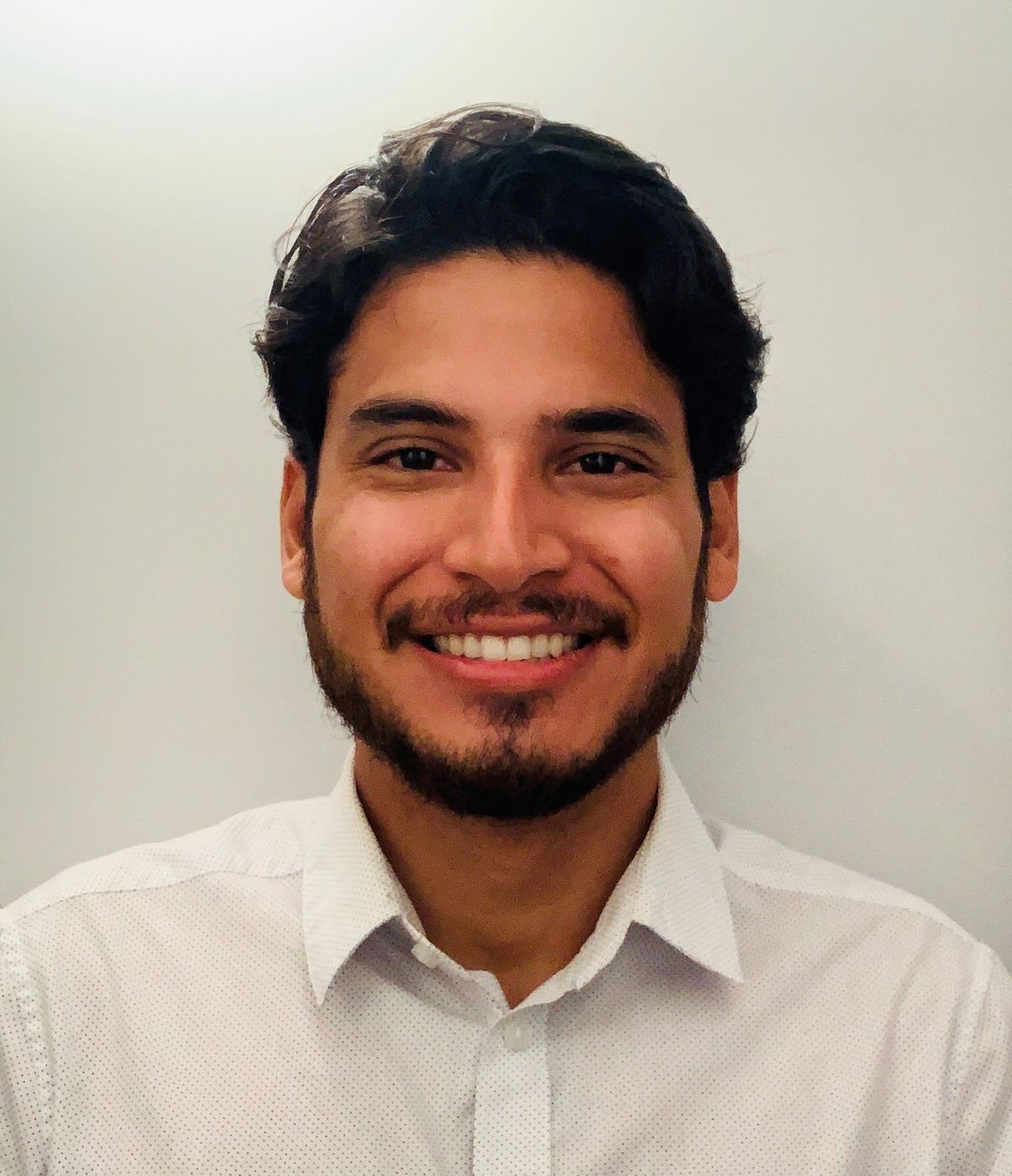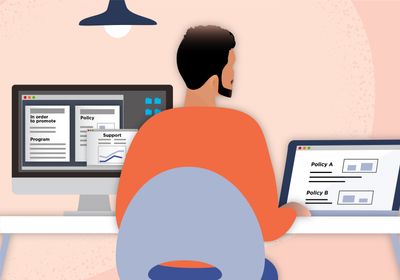ABOVE: Research relies upon policies that direct funding and resources to scientists and institutions. Policy analysts crunch data on the effects of these programs help guide new decisions. Erin Lemieux
When Carlo Quintanilla started graduate school at the University of Texas Southwestern Medical Center, he dove headfirst into his research, exploring the world of specialized proteins and how they regulate lipid metabolism. However, he soon found himself at a crossroads frequented by many: What did he want to do after graduate school? He knew that science policy was a possible career choice but not necessarily what it involved. “I just had a general idea of what it could mean,” Quintanilla said. He decided to explore this field further by getting involved with student government at his university, which would set the stage for his pivot into the world of science policy.
Testing the Waters of Science Policy
In his third year of graduate school, Quintanilla became the president of his university’s graduate student organization and served in the position for two years. In this role, he learned about and worked on policies that impacted student life and research training, such as adjustments to student stipends for cost of living and resources for science writing. He said that the experience helped him practice analyzing issues and developing creative solutions with available data to address problems. “That's when I really started thinking about science policy,” he said.

Quintanilla’s involvement with student government helped demonstrate his interest in policy work to others as well. When he finished his PhD, he applied for the American Association for the Advancement of Science (AAAS) Science and Technology Policy Fellowship and was selected as a 2021 fellow. As part of the program, Quintanilla worked in the Office of Neuroscience Communications and Engagement at the National Institute of Neurological Disorders and Stroke.
He explained, though, that this position involved more communications work than policy. “I really wanted to come back to doing, or really get to a point of doing, that science policy,” he said.
As his fellowship came to an end, Quintanilla talked to his current and former fellows about preparing his cover letter and curriculum vitae for government positions. He applied to a science policy position on USAJOBS, a site where many roles in the federal government are posted. Although he didn’t get the initial position he was after, his application was visible to other offices, including the National Institute of Child Health and Human Development (NICHD), who sent him a job offer as a health science policy analyst. “[It’s] exactly what I wanted to do,” said Quintanilla, who eagerly accepted the position.
Advancing Science Research Through Policy
As a policy analyst at the NICHD, Quintanilla studies how certain policies on funded projects, and changes to them, benefit scientists or research in a particular field. This can include tracking scientists’ career progressions, application rates in scientific fields, and the number of funded projects. “It's a lot of stuff that sometimes seems like behind the scenes that people don't see, but it ends up influencing a lot in how science is structured, or how it's funded, or how it's perceived even,” he explained.
However, he added that understanding the broader context of policies is important for interpreting these effects. “I have to think about policies that have shaped the scientific landscape and why those policies were even developed in the first place,” Quintanilla said. This also includes considering who developed the policies and who they were developed for so that they can look at the metrics of that population before and after a policy was implemented. He explained that understanding this history can help determine if a policy is still relevant.
Program officers at the NICHD, leaders at other institutes, and even members of Congress submit requests for these analyses to inform their decisions, such as whether or not to implement a new policy or adjust future funding allocations. By investigating whether a previous or existing policy with similar goals succeeded in the past, he can help his colleagues and other officials make informed decisions or demonstrate how well funded programs are performing.
One example, he said, has been the National Institutes of Health’s ongoing goal to support early-career investigators. Many of the institutes implemented initiatives, such as prioritizing early-career researchers’ applications for funding or creating distinct categories and grants for these individuals, to accomplish this. “I've been looking to see if they're actually working and are we seeing greater amounts of support for this population,” Quintanilla said.
Applying Research Skills Beyond the Lab
For trainees looking to branch into policy, Quintanilla recommended being open to learning. “Sometimes when you transition to a different field, you might feel like you're starting over, and you feel like you have all this experience that you're not maybe immediately using,” he said.
Although he’s not working on the same topics he was in graduate school, he said that he is still asking questions, analyzing and summarizing data, and staying up to date on research trends. He now sees his role as taking a broader view of research. “It's like the science of science,” he added.
Beyond analytical skills, Quintanilla said that being able to weave findings into a narrative that people can understand is also important. “Your data might be good and clear, and it might really be indicating some change,” he said. “But you need to be able to communicate it to the right people for it to have an actual effect.”
Quintanilla said that connecting with people who work in science policy and building a community can help one find resources and prepare for fellowships or jobs. He recommends the National Science Policy Network as one such resource, but he encouraged trainees to get involved any way they can. “Just talk to other people that have a similar interest, even if you don't really know what science policy means or science advocacy means, just explore it.
Additionally, Quintanilla said that his position as an analyst is only one example of science policy, so talking to other people can help individuals learn more about options to do science policy. “If you see someone on LinkedIn and you think their job looks cool, write to them,” he said. These conversations will not only help individuals learn about what a career entails and how to prepare for it, but also build a trainee’s network.




